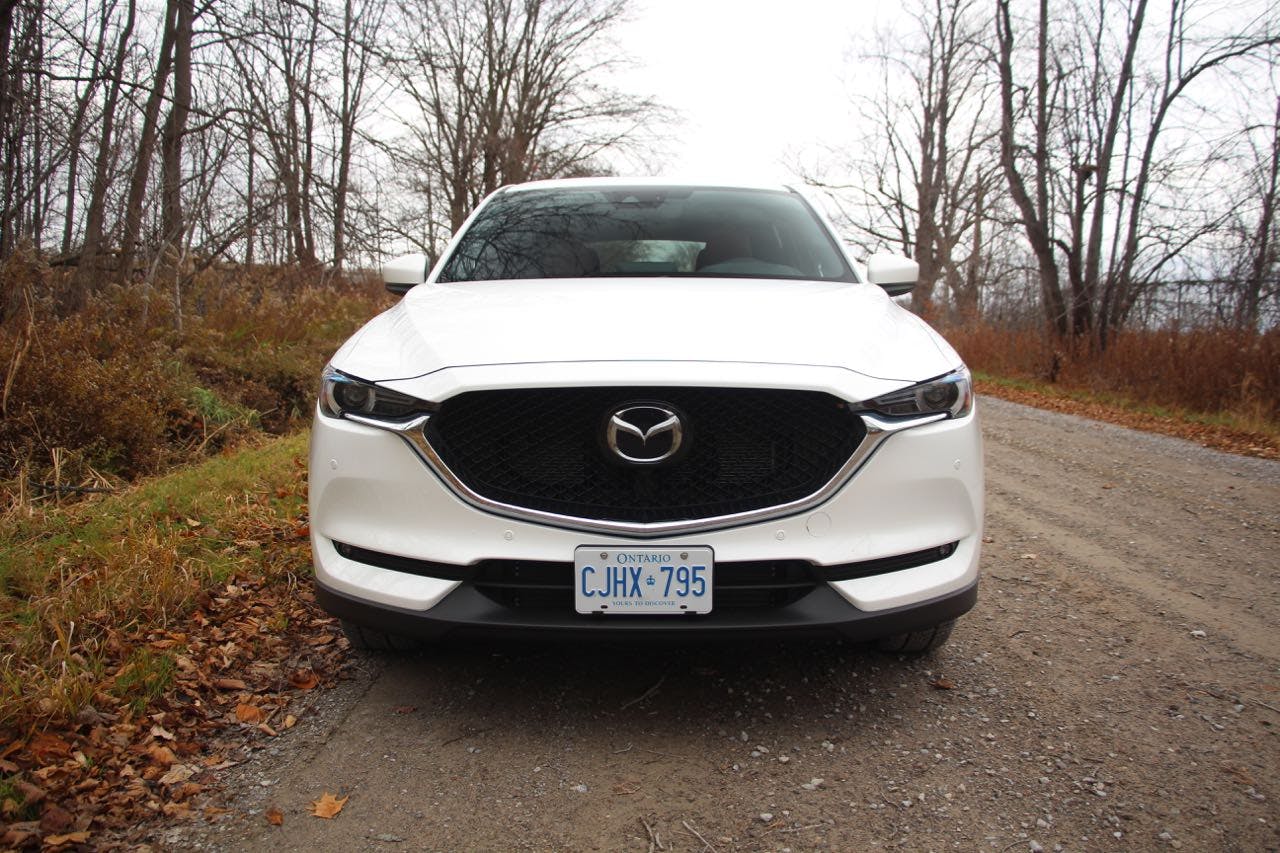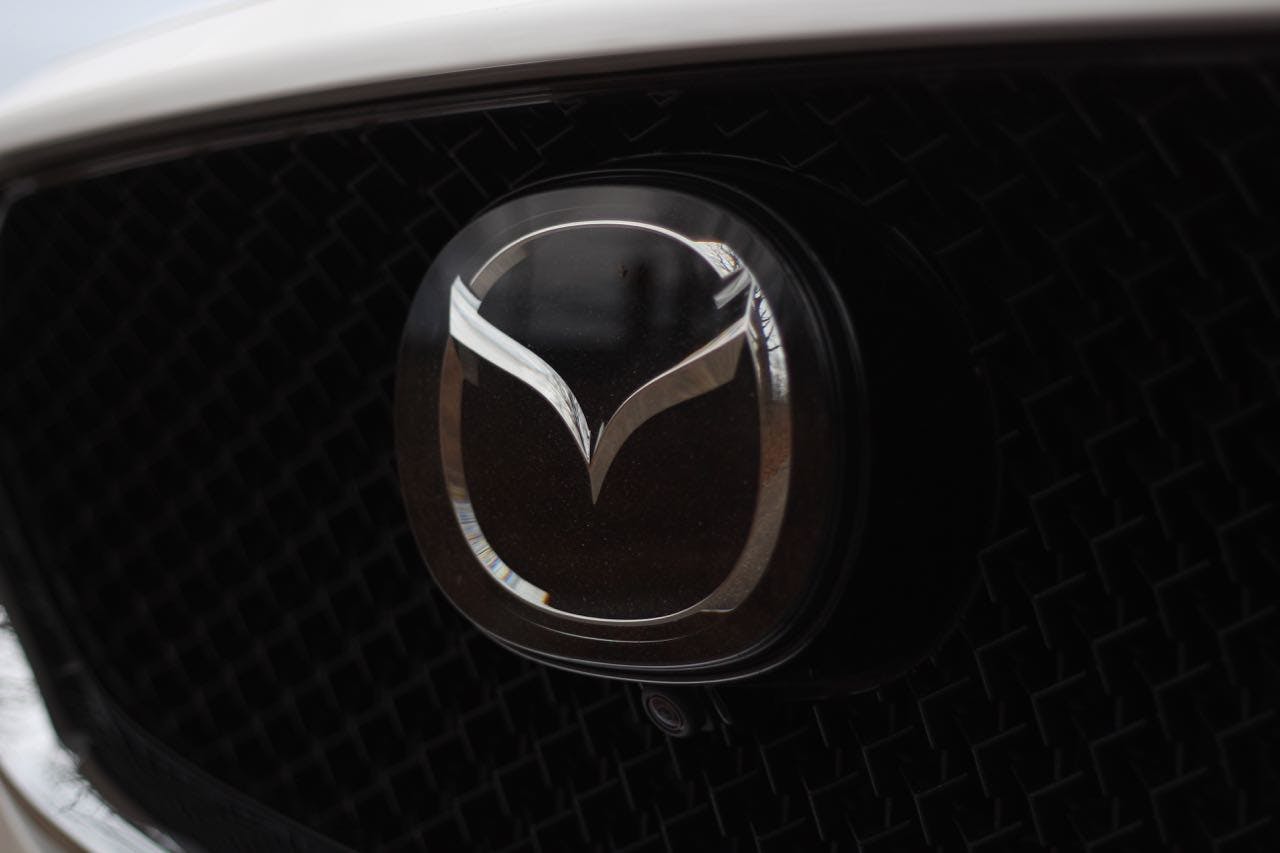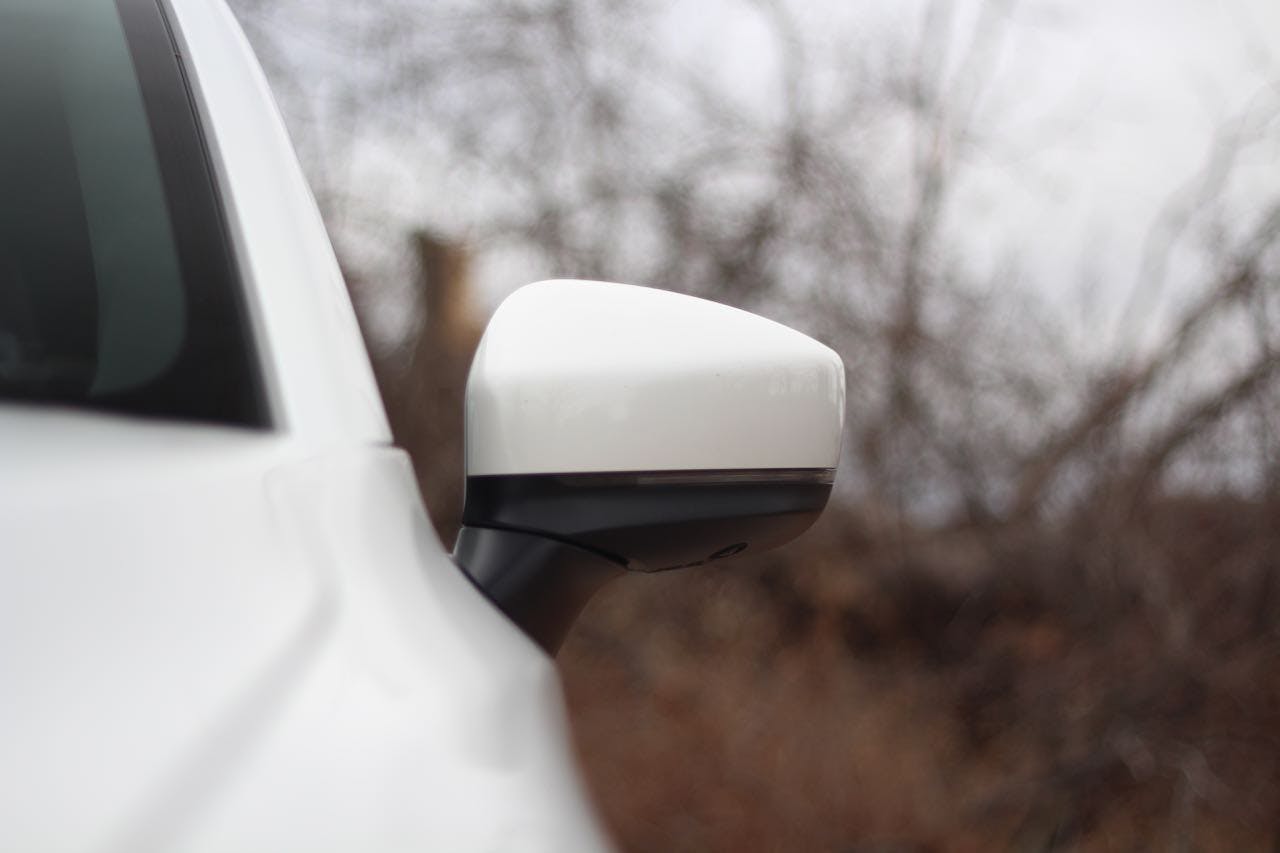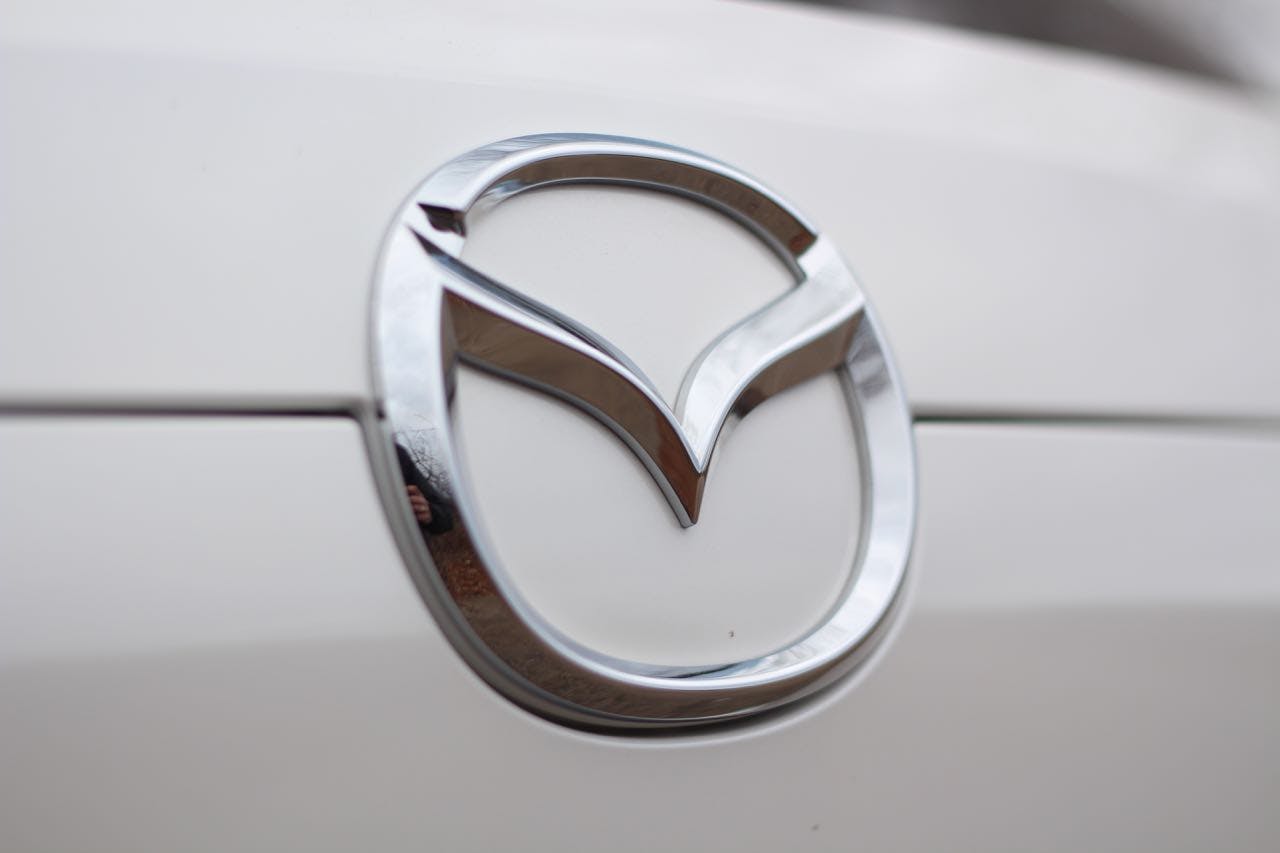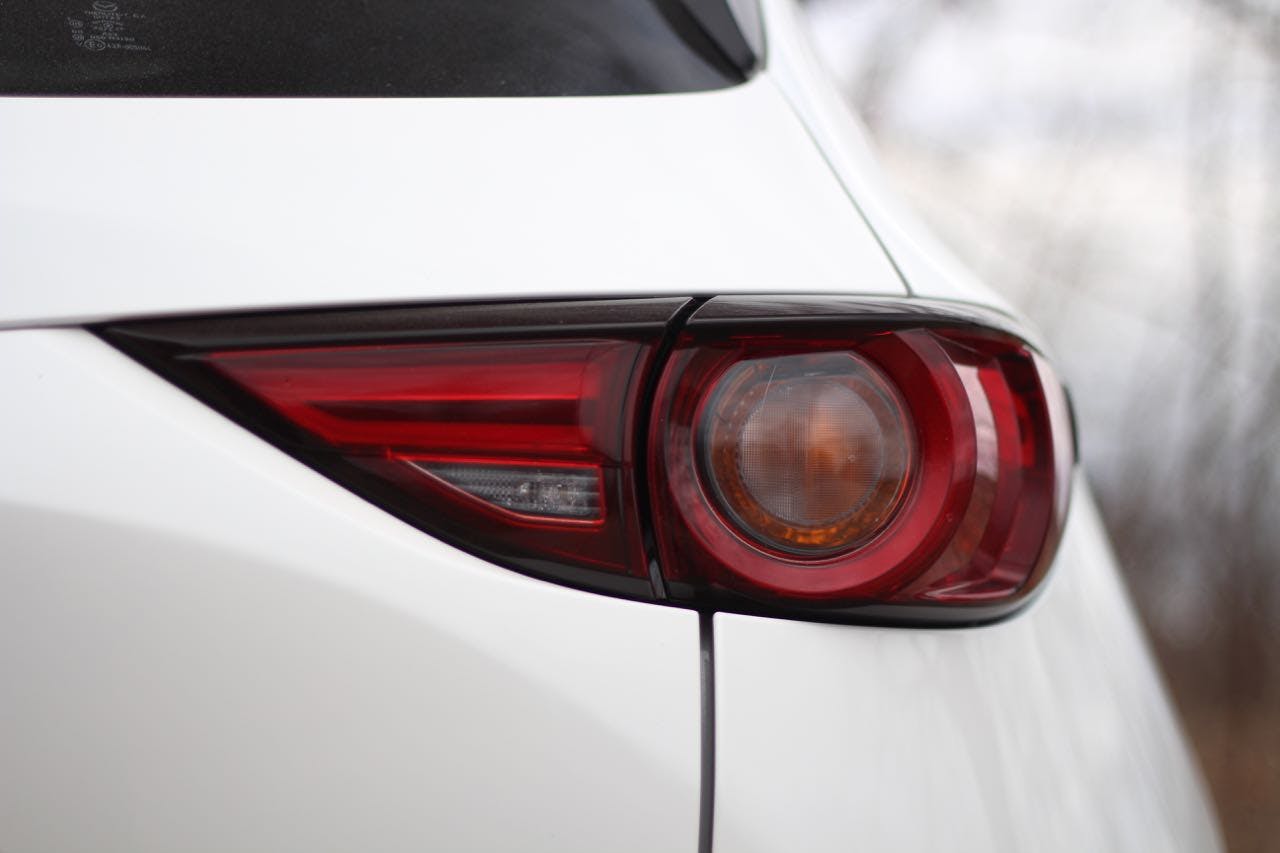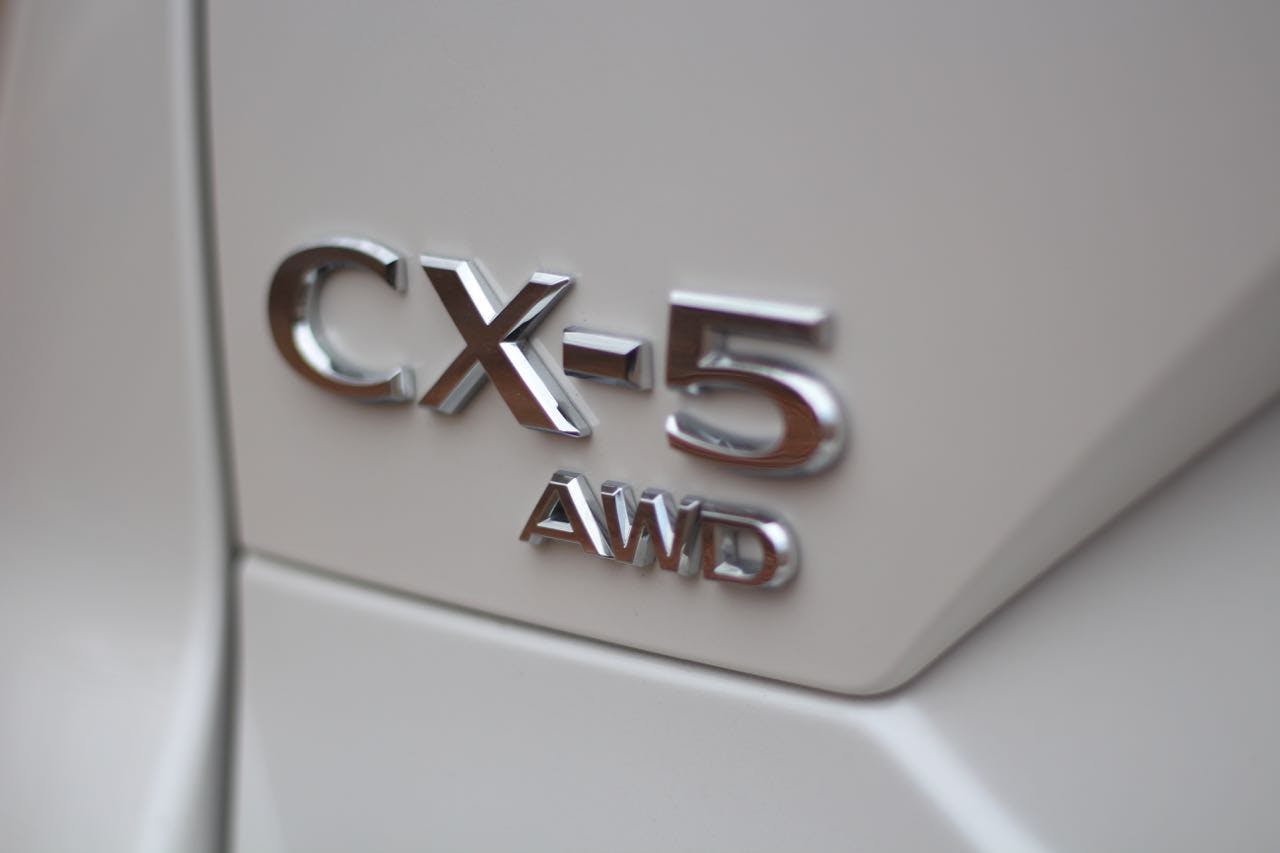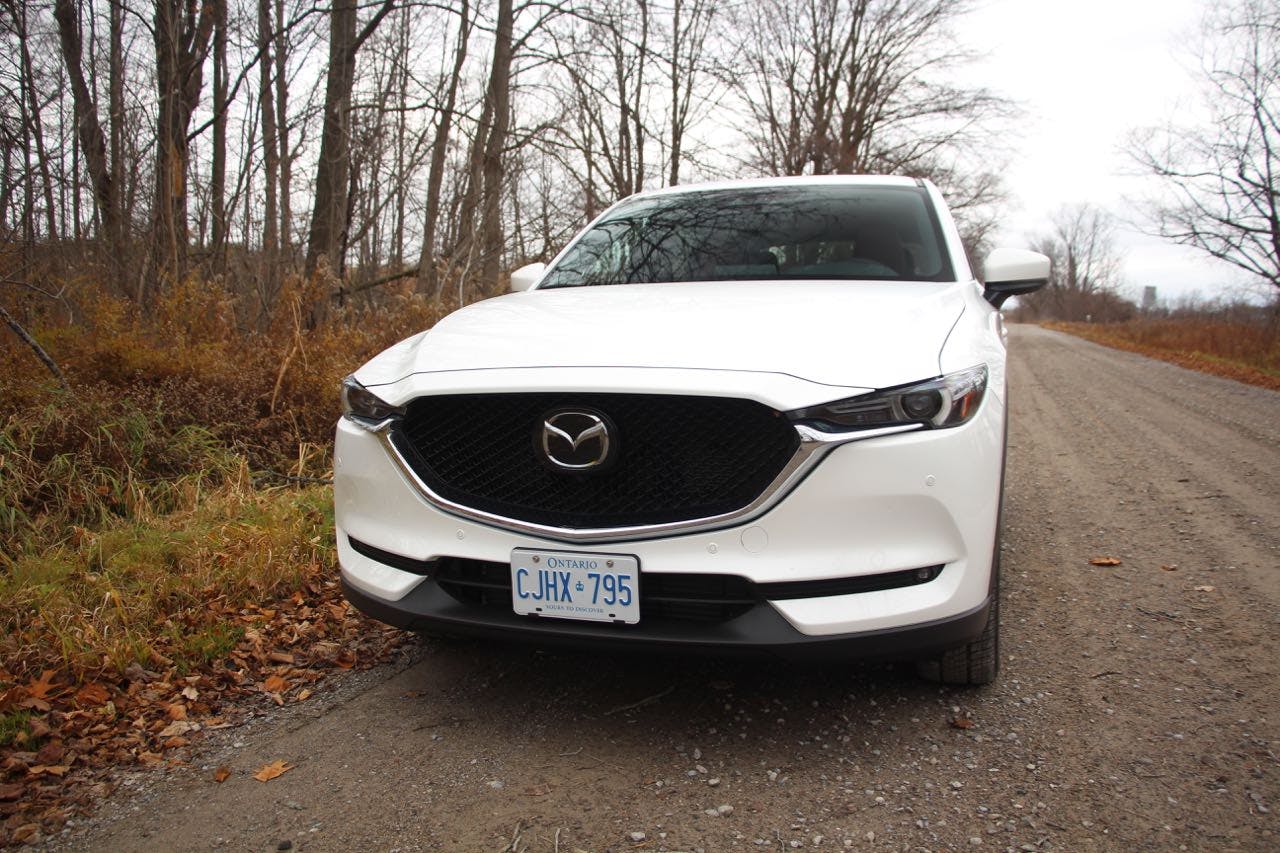Review: 2021 Mazda CX-5 100th Anniversary
Editor’s note: All prices in this review are in Canadian dollars and reflect prices particular to that market.
Buyers love crossovers and the mid-size segment is one of the most hotly contested, so, between 500-hp sedans and physics-defying supercars, I’ve taken one for the team this year and tested some of the most popular models.
I’m duty-bound to understand these tall wagons because, more often than not, friends and family solicit my advice when purchasing these things. While I do have a fondness for Mazda’s driver-first philosophy, crossovers aren’t my go-to category of vehicle; but thousands of buyers love compact SUVs for their high-riding view of the road and for their family- and cargo-carrying abilities.
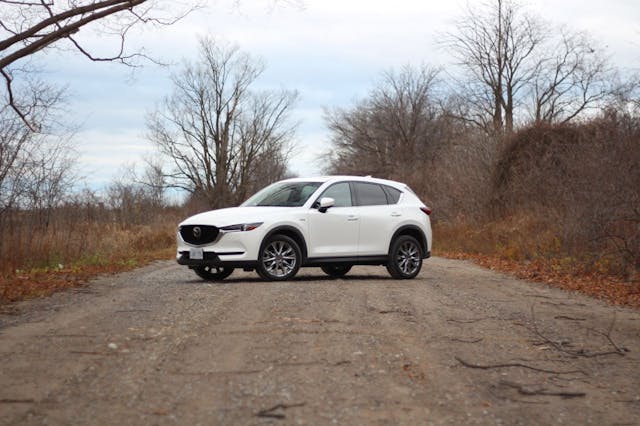
In Canada, Mazda is marking its 100th anniversary with special editions of the CX-5, along with the Mazda 3 and the three-row CX-9 sport utility. This generation CX-5 is on its fourth model year and undoubtedly on the cusp of a refresh, but I still find the design attractive.
Consider the CX-5 100th Anniversary model to be a nostalgic analog to the top Signature model, finished in white paint, with red-and-white leather interior upholstery, and special badging. Buyers of these 100th Anniversary models also receive a book covering a century of Mazda and a scale model of the first vehicle manufactured by the company.
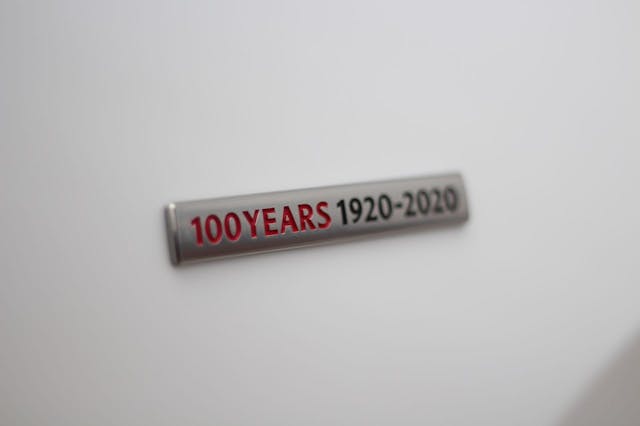
While the Signature model is priced at $42,050, before freight and local taxes, you’ll pay a little more to celebrate Mazda’s special occasion—the 100th Anniversary CX-5 carries an MSRP of $43,550. That doesn’t include the optional Snowflake White Pearl Paint, which rings in at $200. Wait a second. This model is available in just one spec and the cost of the standard paint isn’t priced into the cost? Yes, I’m just as confused as you are. Add the $200 option to a $1970 freight and PDE charge, and our test vehicle totaled $45,700.
Other than the red-and-white leather trim, the interior of this CX-5 showcases standard, modern Mazda design, which is simple and aesthetically pleasing, save for the lacklustre infotainment screen tacked to the top of the dash (more on that later). Materials have a premium feel and finish, and there are few hard plastic touch points.
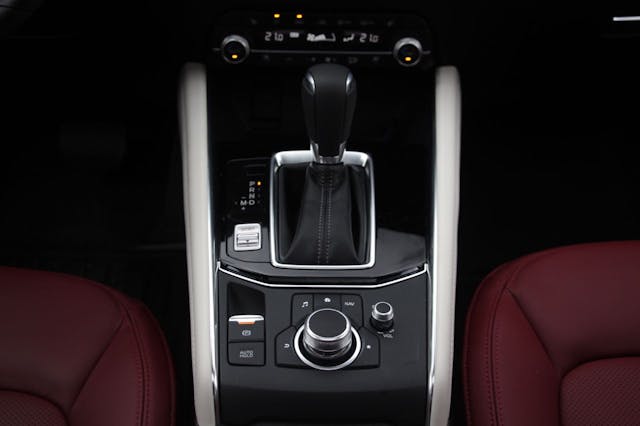
Seating position is one of the rare misses from Mazda, at least for me, a gentleman of average stature. Thanks to the CX-5’s taller hip point, I can’t get the seat low enough or the steering wheel close enough for that elusive, perfect driver interface, unlike every other modern Mazda I’ve tested. Those with different body mechanics may have no complaints here, however. Headroom is generous.
The second row is spacious enough for me to fit in the second row, even with the driver’s seat still in an adult-spec position, and grownups will be comfortable for longer journeys. The most clever feature of the second row is the seat quick-release levers accessible under the hatch. If you’re loading larger objects into the back of the CX-5, and forgot to lower the seats beforehand, you can drop that second row from the cargo area.

Beneath the two-tone leather and nostalgic badging, the 100th Anniversary model is essentially a top-mechanical spec CX-5. As such, it’s powered by a 2.5-liter turbo four, the latter of which has two power outputs—one for 93 octane, another for 87. With all of the horses engaged, and with 93 octane in the tank, the 100th Anniversary makes 250 hp at 5000 rpm and 320 lb-ft at 2500. On the cheap stuff, it’s capped at 227 hp at 5000 rpm and 310 lb-ft at 2000. The difference is subtle and, in daily driving, most won’t notice the difference.

Thankfully, Mazda eschews the trendy CVT of the competition for a good ol’ six-speed automatic and fits the 100th Anniversary edition with its part-time all-wheel drive system.
Save for the Toyota RAV4 Prime hybrid, the CX-5 is the most powerful and the torquiest in its segment. That 300+ lb-ft translates into above-average acceleration for a non-Frankensteined crossover, but it’s not simply the generous torque curve that makes this Mazda a joy to drive. The whole drivetrain is remarkably well-sorted. Since peak torque is available in the sweet spot of the engine’s rpm range, the transmission tends to hold gears rather than hunt for a lower ratio. Around town, torque is the name of the game—from a stop, the CX-5 easily scoots ahead of most vehicles. Accelerating to highway speeds is nearly effortless; this Mazda will gladly reward you with seamless, maximum power when you take the throttle pedal to the mat.

Brake-pedal feel is the highlight of the CX-5’s driving experience. I’m an unabashed brake-feel fetishist and this Mazda is entirely satisfying in that department. The CX-5 grants the driver the same amount of precise brake control as does the MX-5. Modulation is easily controlled and this crossover stays relatively stable under maximum left-pedal stomp, which I used to avoid another spot of bad driving on Toronto’s Highway 401.
Electric power steering has filtered out much of the feel and feedback in modern vehicles, but the CX-5 has the necessary precision to allow aggressive, accurate inputs for crash avoidance (see above) and to be reasonably satisfying on twisty tarmac.
Mazda’s G-Vectoring Control is something that only Japanese engineers would propose—and then perfect. If you’re unfamiliar with the technology, indulge me for a second. It’s a bit of driver-first tech that subtly cuts engine torque when the car detects you’ve moved the wheel, initiating some steering input as you’re entering a corner. That small cut of torque transfers the slightest amount of weight to the front axle and promotes more positive turn-in response. My highly tuned seat-of-the-pants meter can’t detect it most of the time, but I love the fact that it’s there.
Another CX-5 highlight is the quiet, comfortable ride. Mazda’s suspension tuning never seems to go astray. It’s like their engineers discovered the secret sauce to make any car or crossover ride and handle well.
I’m impressed with the CX-5’s body- and wheel-control over rough surfaces provided by the conventional, non-adaptive dampers. Mazda’s engineers have done a fine job controlling body and wheel motion and, at the same time, providing a high level of ride quality. There is a little bit of body roll, but it’s understandable given the CX-5’s tall centre of gravity.

Forward visibility is excellent. Parking is supported by sensors front and rear, as well as a rear camera, and I depend on these systems while driving in my densely-packed city. Mazda’s driver-first, heads-up display design presents the essential information and subtly indicates vehicles to either side. The only frustration occurs if your favorite sunglasses are of the polarized variety.
The infotainment system is undoubtedly this crossover’s Achilles’ heel. U.S.-spec CX-5s receive a revamped system and a 10.25-inch screen (operated via a rotary dial) for the 2021 model year, but Canadian models are left with the disappointing 8-inch touchscreen and the counter-intuitive UX of the Mazda Connect system. The latter is best thought of as a discount version of iDrive. Connect your iPhone like I do, and you’re blessed with Apple CarPlay, which takes this system from also-ran to infotainment champ (Android Auto is also available). The 10-speaker Bose sound system is perfectly acceptable to my race-car-abused eardrums.

In terms of price, this $45,700 100th Anniversary CX-5 sits dead-centre between the Toyota RAV4 Limited AWD ($46,380) and the Honda CR-V Black Edition ($45,245). However, in Signature trim ($44,000), the Mazda undercuts both its competitors.
Based on my drives of these three gold-standard, mid-sized crossovers in the last few months, I find the CX-5 to be the most enjoyable to drive. The Toyota becomes more frantic and noisy when asking for modest to maximum acceleration, and the Honda’s CVT-based experience is displeasing. The Mazda is downright superior both in engine power and power delivery, and its ride, handling, and brake feel also get top marks. In the midsize segment, the CX-5 is the driver’s crossover.
Unless you’re a purebred Mazda fanatic who would celebrate the company’s 100th Anniversary, however, my recommendation is to consider the Signature. It costs approximately $1500 less than this special edition, it’s similarly equipped and, most importantly, you can have it in Mazda’s gorgeous Soul Crystal Red paint.
2021 Mazda CX-5 100th Anniversary Edition
Base price/as-tested: $30,450/$45,700
Highs: A well-designed, driver-focused mid-sized crossover.
Lows: Aging infotainment.
Summary: The ideal choice if you need a crossover with a helping of satisfying driving dynamics.
Disclaimer: The 2021 Mazda CX-5 100th Anniversary tested in this review was provided by Mazda Canada Inc. Fuel was provided by the author.

